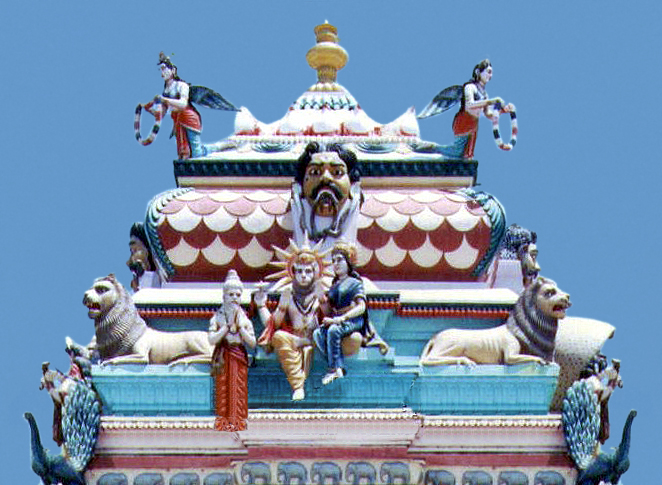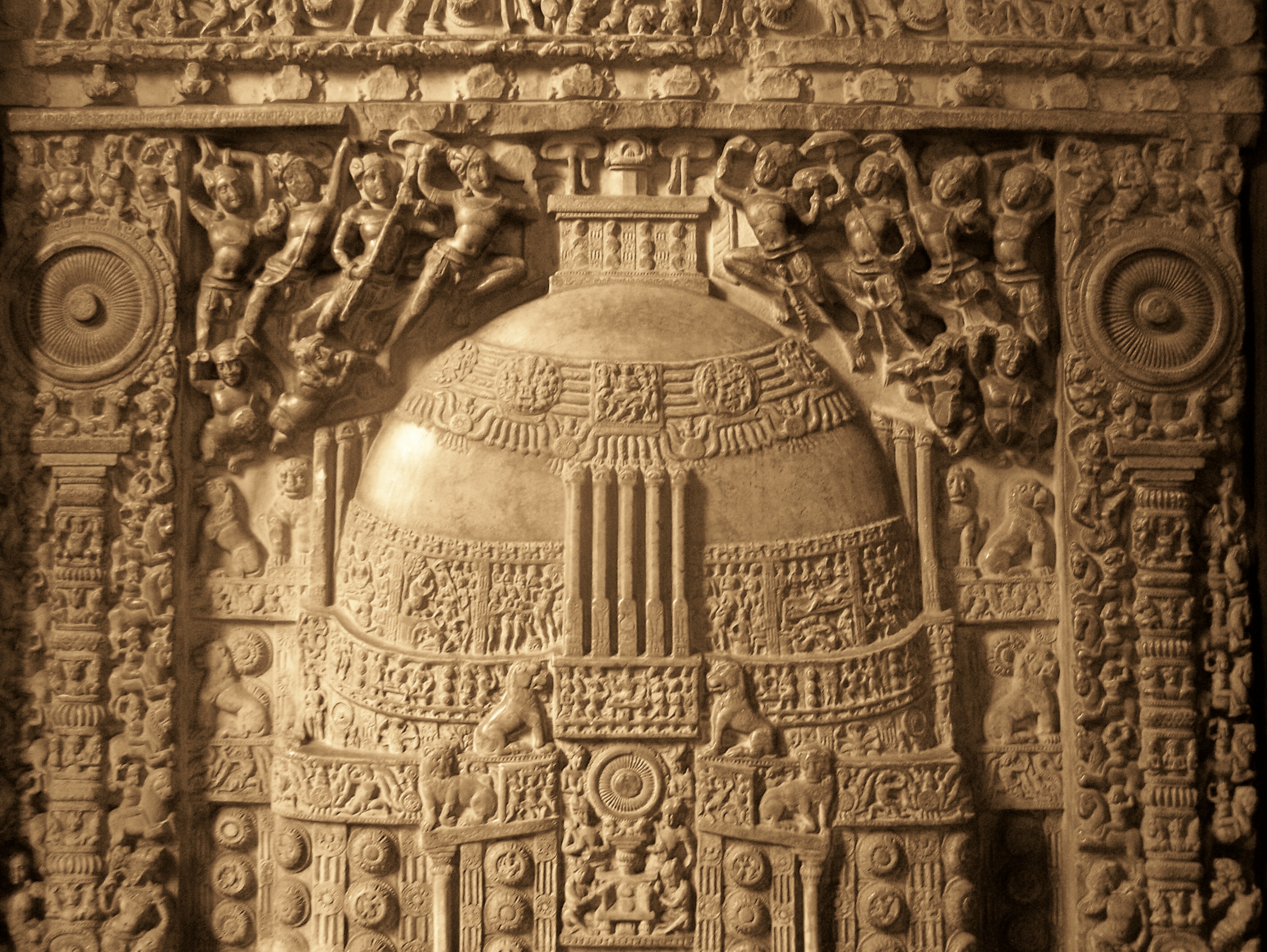|
Mahāratnakūṭa Sūtra
The ''Mahāratnakūṭa Sūtra'' (Sanskrit; , Tib. ''dam-chos dkon-mchog-brtsegs-pa'') is an ancient collection of Mahāyāna Buddhist sūtras. It is also known simply as ''Ratnakūṭa Sūtra'' (), literally the ''Sutra of the Heap of Jewels'' in Sanskrit (''kūṭa'' means ‘accumulation’ or ‘heap’). Overview The ''Mahāratnakūṭa Sūtra'' contains 49 texts of varying length, which are termed "assemblies" by tradition. This collection includes the ''Śrīmālādevī Siṃhanāda Sūtra'', the '' Longer Sukhāvatī-vyūha Sutra'', the ''Akṣobhya-vyūha Sūtra'', a long text called the ''Bodhisattvapiṭaka'', and others.Sangharakshita. ''The Eternal Legacy: An Introduction to the Canonical Literature of Buddhism.'' 2006. p. 168-169 Part of this texts was brought to China and translated by Bodhiruci in the 8th century. Bodhiruci translated some of the texts, and included others which had been previously translated. This later Bodhiruci should not be confused with ano ... [...More Info...] [...Related Items...] OR: [Wikipedia] [Google] [Baidu] |
Sanskrit
Sanskrit (; attributively , ; nominally , , ) is a classical language belonging to the Indo-Aryan branch of the Indo-European languages. It arose in South Asia after its predecessor languages had diffused there from the northwest in the late Bronze Age. Sanskrit is the sacred language of Hinduism, the language of classical Hindu philosophy, and of historical texts of Buddhism and Jainism. It was a link language in ancient and medieval South Asia, and upon transmission of Hindu and Buddhist culture to Southeast Asia, East Asia and Central Asia in the early medieval era, it became a language of religion and high culture, and of the political elites in some of these regions. As a result, Sanskrit had a lasting impact on the languages of South Asia, Southeast Asia and East Asia, especially in their formal and learned vocabularies. Sanskrit generally connotes several Old Indo-Aryan language varieties. The most archaic of these is the Vedic Sanskrit found in the Rig Veda, a colle ... [...More Info...] [...Related Items...] OR: [Wikipedia] [Google] [Baidu] |
Pure Land Buddhism
Pure Land Buddhism (; ja, 浄土仏教, translit=Jōdo bukkyō; , also referred to as Amidism in English,) is a broad branch of Mahayana Buddhism focused on achieving rebirth in a Buddha's Buddha-field or Pure Land. It is one of the most widely practiced traditions of Buddhism in East Asia. According to Charles B. Jones "Pure Land is the dominant form of Buddhism in China, Japan and Korea."Jones, Charles B. (2021). ''Pure Land: History, Tradition, and Practice'', p. xii. Shambhala Publications, . In Chinese Buddhism, the tradition is sometimes called a zōng (school) in an institutional sense, but historically it was most commonly described as a "dharma-gate" (fǎmén 法門), referring to a method of Buddhist practice. In Japanese Buddhism, the term more commonly refers to specific institutions.Jones, Charles B. (2019) ''Chinese Pure Land Buddhism, Understanding a Tradition of Practice,'' pp. 10-12. University of Hawai‘i Press / Honolulu. In Tibetan Buddhism, prayers an ... [...More Info...] [...Related Items...] OR: [Wikipedia] [Google] [Baidu] |
Bodhisattva
In Buddhism, a bodhisattva ( ; sa, 𑀩𑁄𑀥𑀺𑀲𑀢𑁆𑀢𑁆𑀯 (Brahmī), translit=bodhisattva, label=Sanskrit) or bodhisatva is a person who is on the path towards bodhi ('awakening') or Buddhahood. In the Early Buddhist schools as well as modern Theravada Buddhism, a bodhisattva (Pali: ''bodhisatta'') refers to someone who has made a resolution to become a Buddha and has also received a confirmation or prediction from a living Buddha that this will be so. In Mahayana Buddhism, a bodhisattva refers to anyone who has generated ''bodhicitta'', a spontaneous wish and compassionate mind to attain Buddhahood for the benefit of all sentient beings. Mahayana bodhisattvas are spiritually heroic persons that work to attain awakening and are driven by a great compassion (''mahakaruṇā''). These beings are exemplified by important spiritual qualities such as the "four divine abodes" (''brahmaviharas'') of loving-kindness ('' metta''), compassion (''karuṇā''), empathet ... [...More Info...] [...Related Items...] OR: [Wikipedia] [Google] [Baidu] |
Coastal Andhra
Coastal Andhra (South costal Andhra) also known as Kostha Andhra is a region in the state of Andhra Pradesh, India. Vijayawada is the largest city in this region. It was part of Madras State before 1953 and Andhra State from 1953 to 1956. According to the 2011 census, it has an area of which is 57.99% of the total state area and a population of 34,193,868 which is 69.20% of Andhra Pradesh state population. This area includes the coastal districts of Andhra Pradesh on the Circar Coast between the Eastern Ghats and the Bay of Bengal, from the northern border with Odisha to Tirupati district in the South. Coastal Andhra has rich agricultural land, owing to the delta of the Godavari Krishna river and Penna. The prosperity of Coastal Andhra can be attributed to its rich agricultural land and an abundant water supply from these three rivers. Rice grown in paddy fields is the main crop, with pulses and coconuts also being important. The fishing industry is also important to t ... [...More Info...] [...Related Items...] OR: [Wikipedia] [Google] [Baidu] |
Caitika
Caitika () was an early Buddhist school, a sub-sect of the Mahāsāṃghika. They were also known as the Caityaka sect. The Caitikas proliferated throughout the mountains of South India, from which they derived their name. In Pali writings, members of this sect and its offshoots were generally referred to as the ''Andhakas'', meaning "of Coastal Andhra". History The Caitikas branched off from the main Mahāsāṃghika school in the 1st or 2nd century BCE. Epigraphic evidence of the Mahāsāṃghikas in the Mathura region dates to the first century BCE, and the ' dates the formation of the Caitikas to 300 years after the Buddha. However, the ancient Buddhist sites in the lower Kṛṣṇa Valley, including Amarāvati Stupa, Nāgārjunakoṇḍā and Jaggayyapeṭa "can be traced to at least the third century BCE, if not earlier." The Caitikas gave rise to the Aparaśailas and Uttaraśailas (also called Pūrvaśailas). Together, they comprised an important part of the M ... [...More Info...] [...Related Items...] OR: [Wikipedia] [Google] [Baidu] |
Mahāsāṃghika
The Mahāsāṃghika (Brahmi: 𑀫𑀳𑀸𑀲𑀸𑀁𑀖𑀺𑀓, "of the Great Sangha", ) was one of the early Buddhist schools. Interest in the origins of the Mahāsāṃghika school lies in the fact that their Vinaya recension appears in several ways to represent an older redaction overall. Many scholars also look to the Mahāsāṃghika branch for the initial development of Mahayana and Vajrayana Buddhism. Location The original center of the Mahāsāṃghika sect was in Magadha, but they also maintained important centers such as in Mathura and Karli. The Kukkuṭikas were situated in eastern India around Vārāṇasī and Pāṭaliputra and the Bahuśrutīya in Kośala, Andhra, and Gandhara. The Lokottaravāda subschool itself claimed to be of the 'Middle Country', i.e. Ganges Basin region in the north of India. The Mahāsāṃghikas and the Lokottaravāda subschool also had centres in the Gandhara region.The Ekavyāvahārika are not known from later times. The Caitik ... [...More Info...] [...Related Items...] OR: [Wikipedia] [Google] [Baidu] |
Theravada
''Theravāda'' () ( si, ථේරවාදය, my, ထေရဝါဒ, th, เถรวาท, km, ថេរវាទ, lo, ເຖຣະວາດ, pi, , ) is the most commonly accepted name of Buddhism's oldest existing school. The school's adherents, termed Theravādins, have preserved their version of Gautama Buddha's teaching or ''Dharma (Buddhism), Buddha Dhamma'' in the Pāli Canon for over two millennia. The Pāli Canon is the most complete Buddhist canon surviving in a Indo-Aryan languages, classical Indian language, Pali, Pāli, which serves as the school's sacred language and ''lingua franca''.Crosby, Kate (2013), ''Theravada Buddhism: Continuity, Diversity, and Identity'', p. 2. In contrast to ''Mahāyāna'' and ''Vajrayāna'', Theravāda tends to be conservative in matters of doctrine (''pariyatti'') and monastic discipline (''vinaya''). One element of this conservatism is the fact that Theravāda rejects the authenticity of the Mahayana sutras (which appeared c. ... [...More Info...] [...Related Items...] OR: [Wikipedia] [Google] [Baidu] |
Śrīmālādevī Siṃhanāda Sūtra
The ''Śrīmālādevī Siṃhanāda Sūtra'' (, '' of Queen Śrīmālā'') is one of the main early Mahāyāna Buddhist texts belonging to the Tathāgatagarbha sūtras that teaches the doctrines of Buddha-nature and "One Vehicle" through the words of the Indian queen Śrīmālā. After its composition, this text became the primary scriptural advocate in India for the universal potentiality of Buddhahood. History Brian Edward Brown, a specialist in Buddha-nature doctrines, writes that the composition of the ''Śrīmālādevī Siṃhanāda Sūtra'' occurred during the Īkṣvāku Dynasty in the 3rd century CE as a product of the Caitika schools of the Mahāsāṃghikas. Alex Wayman has outlined eleven points of complete agreement between the Mahāsāṃghikas and the ''Śrīmālā'', along with four major arguments for this association. Anthony Barber also associates the earlier development of the ''Tathāgatagarbha Sūtra'' with the Mahāsāṃghikas, and concludes that the M ... [...More Info...] [...Related Items...] OR: [Wikipedia] [Google] [Baidu] |
Akshobhya
Akshobhya ( sa, अक्षोभ्य, ''Akṣobhya'', "Immovable One"; ) is one of the Five Wisdom Buddhas, a product of the Adibuddha, who represents consciousness as an aspect of reality. By convention he is located in the east of the Diamond Realm and is the lord of the Eastern Pure Land Abhirati ('The Joyous'). His consort is Lochanā and he is normally accompanied by two elephants. His color is blue-black and his attributes include a bell, three robes, and staff, as well as a jewel, lotus, prayer wheel, and sword. He has several emanations. Textual history and doctrine Akshobhya appears in the Akṣobhyatathāgatasyavyūha Sūtra (), which was translated during the second century CE and is among the oldest known Mahayana or Pure Land texts. According to the scripture, a monk wished to practice the Dharma in the eastern world of delight and made a vow not to harbor anger or malice towards any being until he achieved enlightenment. He duly proved "immovable" and when ... [...More Info...] [...Related Items...] OR: [Wikipedia] [Google] [Baidu] |
Taishō Tripiṭaka
The Taishō Tripiṭaka (; Japanese: ''Taishō Shinshū Daizōkyō''; “ Taishō Revised Tripiṭaka”) is a definitive edition of the Chinese Buddhist canon and its Japanese commentaries used by scholars in the 20th century. It was edited by Takakusu Junjiro and others. The name is abbreviated as “” in Chinese () and Japanese (). Contents Volumes 1–85 are the literature, in which volumes 56–84 are Japanese Buddhist literature, written in Classical Chinese. Volumes 86–97 are Buddhism related drawings, includes drawings of many Buddhas and bodhisattvas. Volumes 98–100 are texts of different indexes of Buddhist texts known in Japan ca. 1930. The 85 volumes of literature contains 5,320 individual texts, classified as follows. Digitalization The SAT Daizōkyō Text Database edition contains volumes 1–85. The Chinese Buddhist Electronic Text Association (CBETA) edition contains volumes 1–55 and 85. The Fomei edition (佛梅電子大藏經) contains texts in Clas ... [...More Info...] [...Related Items...] OR: [Wikipedia] [Google] [Baidu] |
Upāya
Upaya (Sanskrit: उपाय, , ''expedient means'', ''pedagogy'') is a term used in Buddhism to refer to an aspect of guidance along the Buddhist paths to liberation where a conscious, voluntary action "is driven by an incomplete reasoning" about its direction. Upaya is often used with ''kaushalya'' (कौशल्य, "cleverness"), ''upaya-kaushalya'' meaning "skill in means". Upaya-kaushalya is a concept emphasizing that practitioners may use their own specific methods or techniques that fit the situation in order to gain enlightenment. The implication is that even if a technique, view, etc., is not ultimately "true" in the highest sense, it may still be an ''expedient'' practice to perform or view to hold; i.e., it may bring the practitioner closer to the true realization in a similar way. The exercise of skill to which it refers, the ability to adapt one's message to the audience, is of enormous importance in the Pali Canon. The Digital Dictionary of Buddhism notes tha ... [...More Info...] [...Related Items...] OR: [Wikipedia] [Google] [Baidu] |








